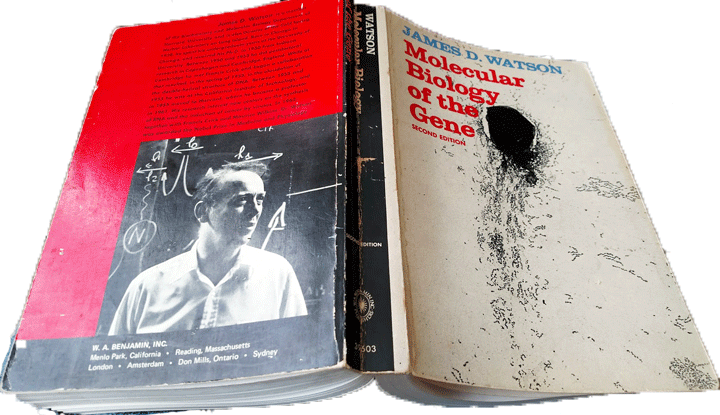To celebrate DNA Day, April 25, all the companies which sell personal genome testing kits are having the best sales ever seen. These mainly end at midnight on the 25th. Click here for my page discussing the pluses and minuses of testing with each company.
My quick recommendations are:
- Test at the largest database, Ancestry.com DNA, if you are interested in genealogy and are from an English speaking country.
- Test at 23andme if you want the health results and like the nitty gritty segment details.
- Test older family members and privacy worriers at Family Tree DNA (the cheek swab is easier than spitting, plus they keep the sample and do not sell any results).
- Europeans or children of recent immigrants may prefer MyHeritage or Family Tree DNA
But what is DNA day and who deems it a day to celebrate? It is the day in 1953 when “James Watson, Francis Crick, Maurice Wilkins, Rosalind Franklin and colleagues published papers in the journal Nature on the structure of DNA” [source wikipedia]
My husband remembers his text books from the 1970s on molecular biology which claimed DNA could never be sequenced. I recently saved his 1970 second edition of Watson’s Molecular Biology of the Gene (now in its 7th edition as of 2013) above from our give-to-charity box.
On April 25, 2003 the human genome project declared success; Fifty years to the day after the Crick, Watson, et al article appeared. Do you think the choice of day was deliberate? And here we are 15 years later where the price of sequencing the small part of your genome which can be different from other humans is only about $50. Amazing!
The key to these tests is that they are just a sample of where our genomes differ. The amazing thing is how accurate the close family prediction are: parents, siblings, first and second cousins. Although half siblings look like grandparents or niblings and there is overlap with high first cousins. Still it is pretty marvelous that this small amount of tested DNA (about 700,000 data points) can achieve such good family matching.
What is less accurate are the ethnicity predictions. Although the broad strokes are good, most North Europeans are very similar, except the Finns and Ashkenazi jews. A North German can look very much like a Scot in their DNA and I am still wondering how my 100% Norwegian Dad gets some English predicted at every company. So I have been exhorting more family members to get tested to help me with my many DNA projects, including finding our Finnish and Saami ancestor(s).
I close with this thought that has come from my many years of working with DNA results: we are all related. I even share DNA with a fellow in Cambodia. He knows his 4th grandad was a Norwegian sailor. I was able to tell him that the DNA segment we match on comes from my Ve farm ancestors in Hordaland.
One of my favorite posts explaining how we are all related comes from the Coop lab – Our Vast Family Tree. Happy DNA Day!


I think FTDNA only keeps the sample for 25 years, not forever.
I recommend people read the book.
At the time I read it, in the mid 1970s, I was studying Biochemistry and rubbing shoulders with PhD students, some of whom were going through similar thought processes. At the time, undergrads used protein analysis of different skin and feather keratins to form a family tree of birds, snakes and lizards. It was only once I began graduate study that Fred Sanger visited and told us about his work in developing methods for sequencing DNA – only slightly less painstaking than previously – and that was after the DNA was broken into smaller fragments using enzymes.
I could see how DNA analysis could help with family trees of species but little imagined that it would be used by ordinary people.
Shortly afterwards I began family history. Within 18 months and entirely by snail mail I had all of my great great grandparents. The cost was more than an annual subscription to current online suppliers.
We did have ready access to 1)directories with mail addresses of every head of household 2)contemporary electoral rolls with every voter (but had to sort through every electorate, so built our muscles moving these off and back to the shelves)
With this experience I am flummoxed by your statement on the applicability of DNA to close relatives (leaving adoptees aside). I meet many people who are shy of sitting down and writing a letter or phoning a relative.
Sometimes even of talking to close known relatives for information on ancestors. Instead some spend ages scanning their DNA results or social media for someone who does not use either. I love meeting people via these new methods. But there are some great opportunities being ignored.
And even relatives you might have found previously unfriendly can open up when asked about their lives and those of people around them.
Give it a try.
As well as the DNA.